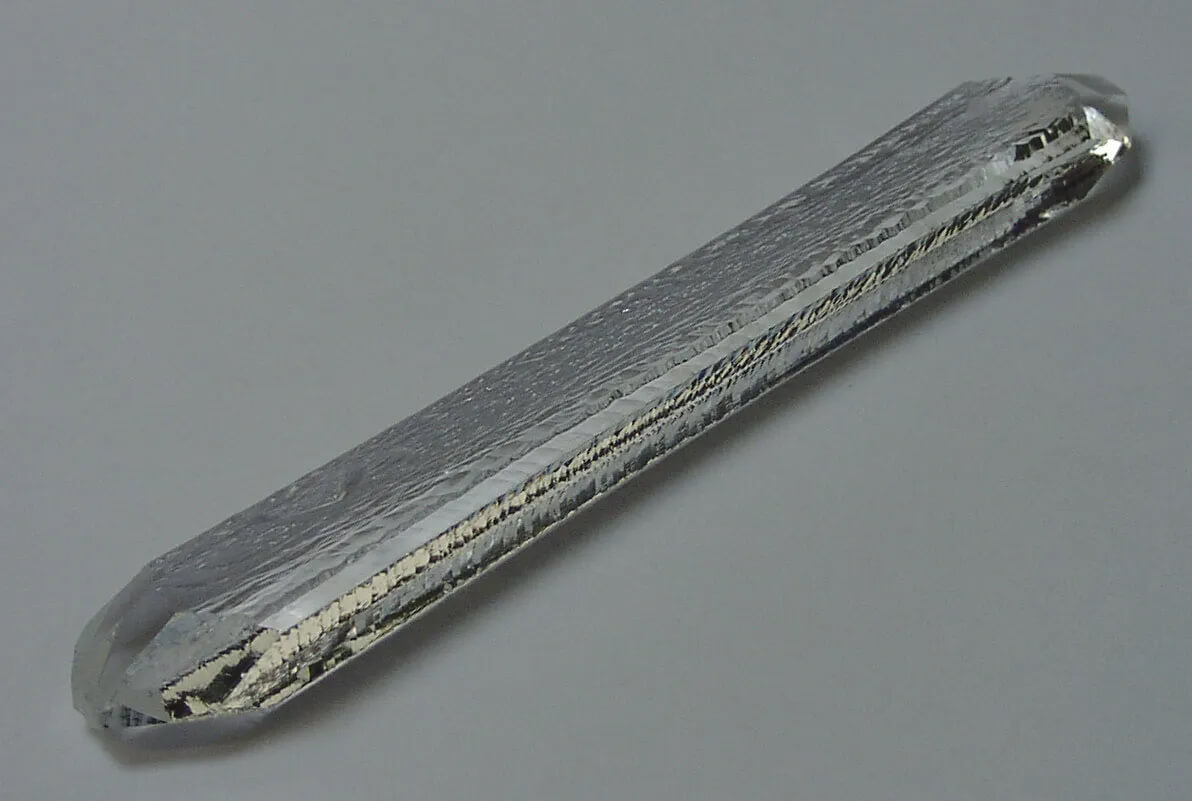A team of researchers at the National Institute for Materials Science and Osaka University Graduate School of Engineering in Japan, has successfully demonstrated the fabrication of single crystal nickel with additive manufacturing, and they are hoping it finds applications in aerospace.
Single crystal metals are highly prized for applications undergoing high stresses and strains and in high temperature environments such as inside a jet engine. They also crack less during manufacturing. Typically they are manufactured with casting.
Traditional turbine blades used to be polycrystalline in nature, meaning that the alloy material consists of random crystals formed as the cast blade cools. The interfaces between these random grains are called the grain boundary, and these are a point of weakness in the microstructure of the material.
A solution to this problem was found by carefully guiding the crystal seed growth through geometric features inside the mold to guide the solidifying blade into a single crystal.
Single crystals are better for strength, thermal stability, and in an aircraft, this means better efficiency.
You can see the image of the formed cylindrical crystal in the graphic below.

Previous research in this area has demonstrated that these single crystals can be fabricated with electron beam melting, but due to the vacuum requirements of EBM, it is prohibitively expensive as a wider solution.
The researchers have instead used laser powder bed fusion, and by altering the laser they have been successful in printing the crystals so they align with the crystal’s axis.
Specifically they used a flat-top laser beam, which provides an equal intensity across a cross section of the beam, resulting in a flat melt pool forming on the powdered metal, which encourages correct orientation of the formed crystals.
Conversely, a laser with a Gaussian intensity distribution results in more crystal defects and more random orientation of the grains.
The result of using the flat top laser is the ability to produce single crystals without grain boundaries that are strong at high temperatures typical inside jet engines.
As previously mentioned, when growing crystals in the traditional manner, seed crystals and geometric features are used in the mold to guide the crystal growth. An advantage of utilizing additive manufacturing for creating single crystal metals is that there is no need for the seed stage.
This technique may be used to fabricate a wide variety of single-crystalline materials, including heat-resistant materials for jet engines and gas turbines.

The 3D printing technique with the flat top laser can also be used with other metals and alloys to create a range of single crystals perfect for aerospace and power generation applications such as jet engines and gas turbines respectively.
You can find the paper titled “Manufacturing single crystals of pure nickel via selective laser melting with a flat-top laser beam” in the Additive Manufacturing Letters journal at this link.









